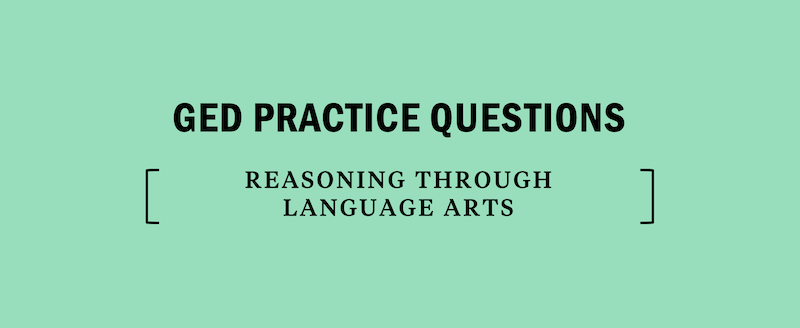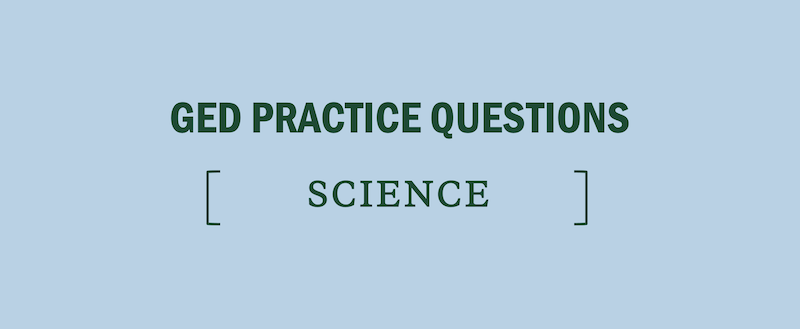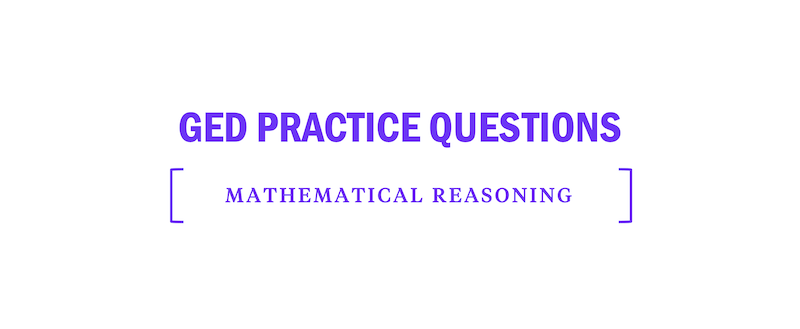What's on the GED: Reasoning Through Language Arts
The GED® Reasoning through Language Arts Test (RLA) evaluates your reading and writing skills. You will have 2.5 hours for about 46 questions that require you to:
- answer questions based on single passages and on passages that are paired together (reading and thinking skills);
- review written text and select words and phrases so that the final product is written correctly (language skills); and
- compose an extended response to a writing prompt based on reading one or two passages or a passage accompanied by a graphic (writing skills).
The first section of the test includes reading and language questions and concludes with about 45 minutes for the Extended Response. You will have a 10-minute break before the second section, which includes reading and language questions only.
[ RELATED: GED Reasoning through Language Arts Practice Questions ]
You will need a minimum score of 145 to pass the Reasoning through Language Arts Test, which is one of the four tests you will need to pass in order to earn a high school equivalency diploma.
GED Reading Content Areas
You will answer questions based on a wide range of types of reading materials. Seventy-five percent of the questions are based on informational texts, which include workplace- and community-based documents, general nonfiction, and nonfiction related to general interest social studies and science topics. Twenty-five percent of the questions are based on fiction selections.
GED Language Content Areas
The language skills model real-life editing to ensure correct sentence structure, agreement (subject-verb and pronoun-antecedent), capitalization, punctuation, homonyms, and possessives. The questions also assess appropriate word choice and elimination of informal usage to fit the purpose of the writing task.
GED Extended Response
The Extended Response requires reading text materials and responding to a writing prompt (assignment) by developing an argument and supporting your ideas with evidence from the text.
Computer-Based Reasoning through Language Arts Test Question Formats
You will work with several different question formats on the RLA Test. Many of the questions will be in the familiar multiple-choice format, but you will need to be acquainted with the other formats as well.
Extended Response Question on the GED Reasoning through Language Arts Test
An important task on the GED Reasoning Through Language Arts Test involves writing an extended response to a passage, two passages, or a passage accompanied by a graphic. This activity integrates reading and analytical skills with writing skills.
You can take up to 45 minutes at the end of the first section of the RLA Test to complete the assignment. This task has its own clock to help you manage your time. Here are some time management suggestions:
- Preview the writing prompt.
- Read the selection or selections, carefully using the highlighter tool to draw attention to information for later use.
- Compose a thesis statement.
- Gather evidence from the text to support your thesis statement.
- Plan your response (use the offline wipe-off board).
- Draft your response (in the text box that scrolls down).
- Review your response to improve your writing and correct any errors with the editing tools—cut, copy, paste, undo, and redo.
Qualities of a Successful Extended Response on the GED
Your response can earn up to 6 points. It is reviewed for three different “traits” or qualities, and each trait is assigned a score from 0–2. So, 3 traits times a maximum of 2 points each equals a maximum of 6 points.
Unlike other writing that you may have done in the past, this task is “evidence-based writing,” meaning that you need to base your position on the information and arguments in the reading materials.
Trait 1: Creation of Arguments and Use of Evidence
To earn a score of 2 on Trait 1 you need to do the following:
- Create an argument by making a logical claim that clearly states your position.
- Use 3 or more specific references from the text(s) to support the claim.
- Identify valid arguments and/or fallacious claims in the text(s).
- Point out supported and/or unsupported claims in the text(s).
Trait 2: Development of Ideas and Organizational Structure
To earn a score of 2 on Trait 2 you need to do the following:
- Create an effective organizational structure.
- Sequence ideas logically so that one idea leads to the next.
- Elaborate main ideas and tie them to specific evidence from the text.
- Make effective transitions to cohesively link ideas.
- Use accurate and advanced word choice.
- Employ an appropriate level of formality (no slang, etc.).
Trait 3: Clarity and Command of Standard English Conventions
To earn a score of 2 on Trait 3, you need to have few errors that would interfere with a reader’s understanding of what you wrote. You should also do the following:
- Use varied and correct forms of sentence structure.
- Maintain subject-verb and pronoun-antecedent agreement.
- Adhere to the rules of capitalization, punctuation, and spelling.
- Distinguish between commonly confused words, such as possessives and homonyms.
- Avoid wordiness and awkward constructions.
[ WHAT’S ON THE GED: Social Studies • Mathematical Reasoning • Science ]







